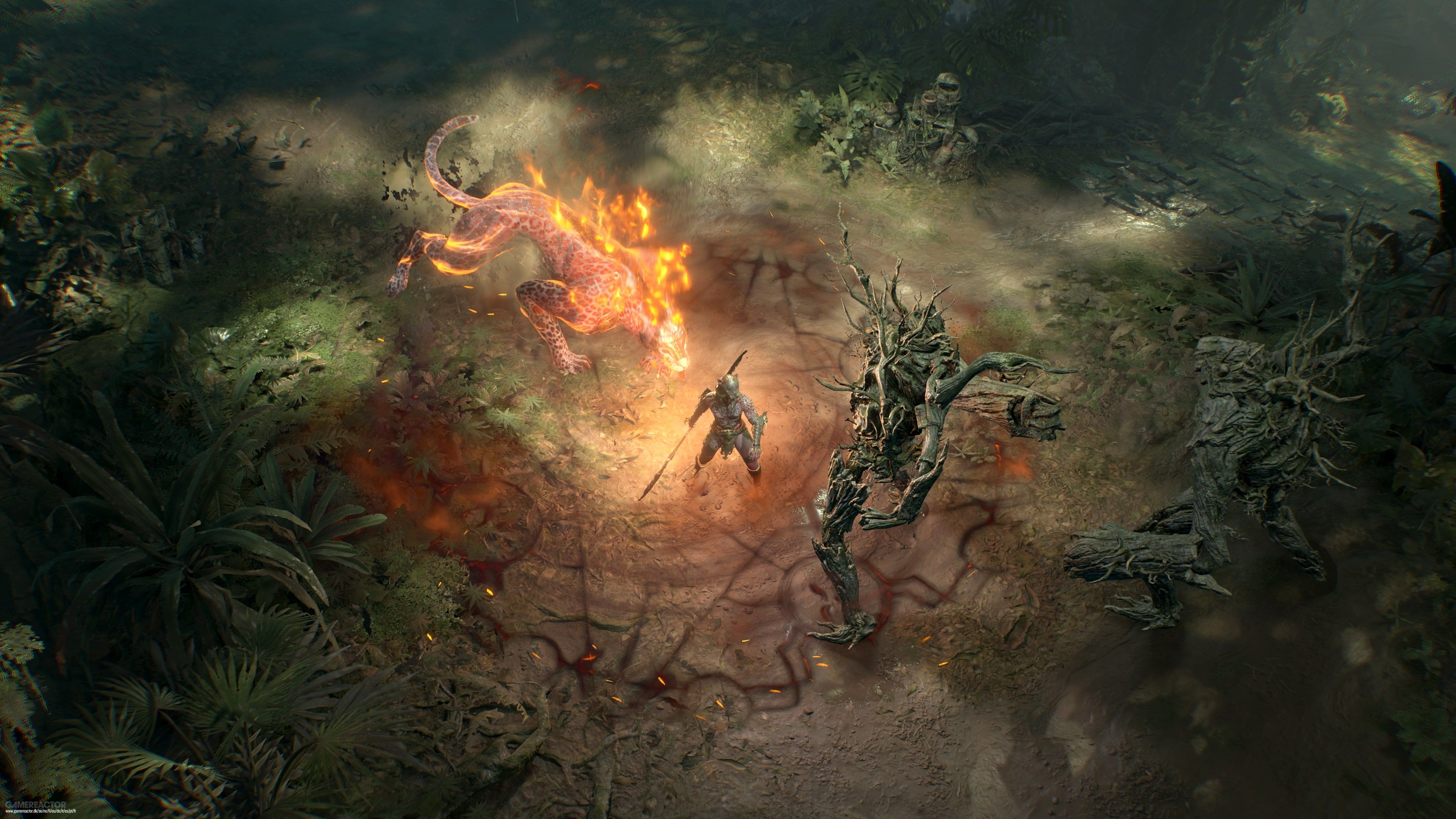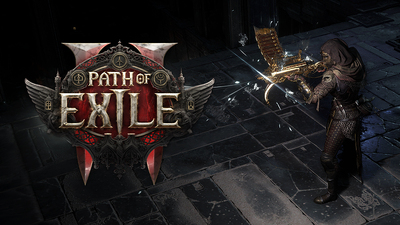- Feed de Notícias
- EXPLORAR
- Páginas
- Grupos
- Eventos
- Watch
- Marketplace
- Jobs
- Fóruns
- Jogos
- 76 Publicações
- 75 fotos
- 0 Vídeos
- Male
- 12/10/1980
- Seguido por 0 pessoas
Atualizações Recentes
- Diablo 4 Strongholds Guide NovoGratuitoIn stockamericanStrongholds in Diablo 4 are fortified zones consumed by demonic corruption, offering some of the most challenging combat encounters in the open world. They act as self-contained events with layered objectives, elite enemies, and final bosses that demand strong builds and careful planning. Unlike typical dungeons, these battles unfold directly within Sanctuary's regions, connecting seamlessly to exploration and story progression while rewarding players with loot, renown, and world-altering outcomes.
Each of the five main regions—Fractured Peaks, Scosglen, Dry Steppes, Kehjistan, and Hawezar—contains three Strongholds, making a total of fifteen across the game. These locations appear as red icons on the map until players purge them of corruption. Enemies inside usually outlevel the player by at least two levels, adding tension and difficulty that makes preparation essential. Clearing one not only grants powerful rewards but can unlock waypoints, merchants, and new questlines, permanently transforming the area.
The process of reclaiming a Stronghold typically involves completing objectives like destroying demonic altars, defeating cult leaders, or slaying bosses tied to the corruption. Once the main threat is eliminated, the land is restored, light returns to the area, and new opportunities open for players. Some Strongholds even unlock dungeons or side quests that deepen the lore of Sanctuary and provide extra chances for high-value loot.
Taking on a Stronghold solo is possible, but cooperative play is often more effective, especially at higher world tiers. Working with others allows classes to complement each other's strengths, making it easier to handle waves of enemies or manage boss phases. Coordinated teams can clear objectives faster and maintain consistent momentum through multiple Strongholds in a single session.
Timing also matters when approaching these battles. Many players prefer to wait until reaching the mid-to-late 40s or higher world tiers before attempting them, since the difficulty scales with the player's level but the loot improves dramatically. This approach maximizes efficiency, giving access to better gear and faster progression into endgame content while keeping the challenge rewarding.
Strongholds serve as a crucial link between exploration, progression, and endgame preparation. They bring together the intensity of dungeon combat with the freedom of the open world, rewarding courage and strategy with meaningful world changes. Conquering them not only strengthens the player but reshapes Sanctuary itself, turning zones of despair into beacons of safety and progress. Find the latest Diablo 4 details, guides, and special offers at https://www.u4gm.com/d4-itemsStrongholds in Diablo 4 are fortified zones consumed by demonic corruption, offering some of the most challenging combat encounters in the open world. They act as self-contained events with layered objectives, elite enemies, and final bosses that demand strong builds and careful planning. Unlike typical dungeons, these battles unfold directly within Sanctuary's regions, connecting seamlessly to exploration and story progression while rewarding players with loot, renown, and world-altering outcomes. Each of the five main regions—Fractured Peaks, Scosglen, Dry Steppes, Kehjistan, and Hawezar—contains three Strongholds, making a total of fifteen across the game. These locations appear as red icons on the map until players purge them of corruption. Enemies inside usually outlevel the player by at least two levels, adding tension and difficulty that makes preparation essential. Clearing one not only grants powerful rewards but can unlock waypoints, merchants, and new questlines, permanently transforming the area. The process of reclaiming a Stronghold typically involves completing objectives like destroying demonic altars, defeating cult leaders, or slaying bosses tied to the corruption. Once the main threat is eliminated, the land is restored, light returns to the area, and new opportunities open for players. Some Strongholds even unlock dungeons or side quests that deepen the lore of Sanctuary and provide extra chances for high-value loot. Taking on a Stronghold solo is possible, but cooperative play is often more effective, especially at higher world tiers. Working with others allows classes to complement each other's strengths, making it easier to handle waves of enemies or manage boss phases. Coordinated teams can clear objectives faster and maintain consistent momentum through multiple Strongholds in a single session. Timing also matters when approaching these battles. Many players prefer to wait until reaching the mid-to-late 40s or higher world tiers before attempting them, since the difficulty scales with the player's level but the loot improves dramatically. This approach maximizes efficiency, giving access to better gear and faster progression into endgame content while keeping the challenge rewarding. Strongholds serve as a crucial link between exploration, progression, and endgame preparation. They bring together the intensity of dungeon combat with the freedom of the open world, rewarding courage and strategy with meaningful world changes. Conquering them not only strengthens the player but reshapes Sanctuary itself, turning zones of despair into beacons of safety and progress. Find the latest Diablo 4 details, guides, and special offers at https://www.u4gm.com/d4-items0 Comentários 0 Compartilhamentos 56 VisualizaçõesFaça Login para curtir, compartilhar e comentar! - PoE 3.26 Unique Item Vendor Recipes Guide NovoGratuitoIn stockamericanMastering vendor recipes for unique items in PoE 3.26 gives players a reliable way to get powerful gear without relying purely on luck. By using these recipes, players can craft key uniques such as Kingmaker or complete more complex ones like Loreweave, making vendor crafting a core part of any advanced Path of Exile strategy. Here are unique item recipes:
1. The Anima Stone: Crafted by vending 1 Primordial Might, 1 Primordial Harmony, and 1 Primordial Eminence.
2. Arborix: Created by vending 1 Grelwood Shank, 1 Beltimber Blade, and 1 Orb of Fusing.
3. Cameria's Avarice: Obtained by vending Cameria's Maul combined with high-quality support gems (Ice Bite Support, Glacial Hammer, and Ice Spear, each at 20% quality).
4. Combat Focus: Crafted by vending an uncorrupted Prismatic Gem of 20% quality along with specific rings combinations (Ruby, Sapphire, or Topaz rings).
5. Duskdawn: Made by vending Shade of Solaris, Light of Lunaris, and an Orb of Fusing.
6. The Goddess Scorned: Crafted by vending The Goddess Bound (20% quality), an Elegant Sword (20% quality), Combustion Support (≥1% quality), plus an Orb of Fusing matching the sockets/colors/links.
7. Hyrri's Bite: Obtained by vending a white Sharktooth Arrow Quiver, a rare Onyx Amulet, a Rain of Arrows gem (≥1% quality), and an Orb of Chance.
8. Kingmaker: Crafted by vending Soul Taker, Heartbreaker, and a non-corrupted Orb of Fusing that preserves Shaper/Elder influences. Kingmaker is a fan-favorite unique sword with critical and elemental bonuses.
9. Loreweave: Created by vending 60 unique rings (corrupted allowed; all Shaper/Elder rings yield Shaper/Elder Loreweave).
10. Magna Eclipsis: Made by vending Invictus Solaris, Vix Lunaris, and an Orb of Fusing.
11. The Retch: Crafted by vending Feastbind, Faminebind, and an Orb of Fusing (not corrupted).
12. Star of Wraeclast: Obtained by vending any rarity Onyx Amulet, a unique Ruby Ring, and a level 20 corrupted Lightning Warp gem. Note that the Vaal version of Lightning Warp does not work here.
13. The Taming: Created by vending three Berek's rings (Berek's Respite, Berek's Pass, Berek's Grip).
14. The Vinktar Square: Crafted by vending the four Agnerod staffs (North, South, East, West). The tier of the resulting weapon is decided by the lowest item level of the four.
For updated details, guides, and offers on PoE 1, check out https://www.u4gm.com/poe-currencyMastering vendor recipes for unique items in PoE 3.26 gives players a reliable way to get powerful gear without relying purely on luck. By using these recipes, players can craft key uniques such as Kingmaker or complete more complex ones like Loreweave, making vendor crafting a core part of any advanced Path of Exile strategy. Here are unique item recipes: 1. The Anima Stone: Crafted by vending 1 Primordial Might, 1 Primordial Harmony, and 1 Primordial Eminence. 2. Arborix: Created by vending 1 Grelwood Shank, 1 Beltimber Blade, and 1 Orb of Fusing. 3. Cameria's Avarice: Obtained by vending Cameria's Maul combined with high-quality support gems (Ice Bite Support, Glacial Hammer, and Ice Spear, each at 20% quality). 4. Combat Focus: Crafted by vending an uncorrupted Prismatic Gem of 20% quality along with specific rings combinations (Ruby, Sapphire, or Topaz rings). 5. Duskdawn: Made by vending Shade of Solaris, Light of Lunaris, and an Orb of Fusing. 6. The Goddess Scorned: Crafted by vending The Goddess Bound (20% quality), an Elegant Sword (20% quality), Combustion Support (≥1% quality), plus an Orb of Fusing matching the sockets/colors/links. 7. Hyrri's Bite: Obtained by vending a white Sharktooth Arrow Quiver, a rare Onyx Amulet, a Rain of Arrows gem (≥1% quality), and an Orb of Chance. 8. Kingmaker: Crafted by vending Soul Taker, Heartbreaker, and a non-corrupted Orb of Fusing that preserves Shaper/Elder influences. Kingmaker is a fan-favorite unique sword with critical and elemental bonuses. 9. Loreweave: Created by vending 60 unique rings (corrupted allowed; all Shaper/Elder rings yield Shaper/Elder Loreweave). 10. Magna Eclipsis: Made by vending Invictus Solaris, Vix Lunaris, and an Orb of Fusing. 11. The Retch: Crafted by vending Feastbind, Faminebind, and an Orb of Fusing (not corrupted). 12. Star of Wraeclast: Obtained by vending any rarity Onyx Amulet, a unique Ruby Ring, and a level 20 corrupted Lightning Warp gem. Note that the Vaal version of Lightning Warp does not work here. 13. The Taming: Created by vending three Berek's rings (Berek's Respite, Berek's Pass, Berek's Grip). 14. The Vinktar Square: Crafted by vending the four Agnerod staffs (North, South, East, West). The tier of the resulting weapon is decided by the lowest item level of the four. For updated details, guides, and offers on PoE 1, check out https://www.u4gm.com/poe-currency0 Comentários 0 Compartilhamentos 153 Visualizações - How Ashes of the Stars Shines in Path of Exile 3.26 NovoGratuitoIn stockamericanIn Path of Exile 3.26, Ashes of the Stars remains one of the most impactful unique amulets, though the way it fits into the current meta has shifted with new item introductions, balance updates, and build evolutions. This Onyx amulet, which requires level 60, continues to be sought after for the unique way it empowers skill gems, aura stacking, and attribute coverage, but its applications now reflect the latest changes in mechanics and playstyle trends.
The strength of Ashes of the Stars lies in its dual benefits of increasing both the level and quality of all skill gems, alongside solid attribute bonuses and extra experience gain. These traits make it highly versatile and allow it to slot naturally into builds that rely on scaling skill gem power. The attribute boosts smooth out requirements for otherwise restrictive gems, while the universal gem bonuses push damage, utility, and survivability further than most other amulets can manage.
The 3.26 expansion in particular gave new life to this item by strengthening archetypes that scale with gem levels and quality. Elementalist builds, especially those built around Energy Blade, gained significant value from recent ascendancy buffs to golems and elemental scaling. With Ashes of the Stars enhancing gem quality, these setups achieve higher damage, stronger defenses, and faster casting speed, allowing them to excel in both mapping and endgame encounters.
Players leaning into aura stacking also find the amulet useful thanks to its interaction with mana reservation, letting multiple auras be sustained without collapsing the character's mana pool. This opens doors to high-damage hybrid setups that keep defensive layers intact.
Outside of Energy Blade-focused characters, the amulet finds relevance in a wide variety of spellcaster and skill-heavy builds. Channeling skills, rapid-fire spells, and even certain minion builds benefit greatly from its flat gem scaling, which cannot be replicated by most rare amulets. The consistency it provides to gem-driven strategies ensures that characters can remain competitive as the meta shifts.
Ashes of the Stars continues to hold a valuable place in the 3.26 environment. The synergy between gem enhancement, mana reservation efficiency, and attribute flexibility makes it a premium choice for players aiming to push skill gem power to its limits. With the latest round of buffs and balance adjustments, it remains a defining item for caster and aura-based builds, and one that can shape an entire strategy around its strengths. Stay current with PoE 1 guides, details, and exclusive offers at https://www.u4gm.com/poe-currencyIn Path of Exile 3.26, Ashes of the Stars remains one of the most impactful unique amulets, though the way it fits into the current meta has shifted with new item introductions, balance updates, and build evolutions. This Onyx amulet, which requires level 60, continues to be sought after for the unique way it empowers skill gems, aura stacking, and attribute coverage, but its applications now reflect the latest changes in mechanics and playstyle trends. The strength of Ashes of the Stars lies in its dual benefits of increasing both the level and quality of all skill gems, alongside solid attribute bonuses and extra experience gain. These traits make it highly versatile and allow it to slot naturally into builds that rely on scaling skill gem power. The attribute boosts smooth out requirements for otherwise restrictive gems, while the universal gem bonuses push damage, utility, and survivability further than most other amulets can manage. The 3.26 expansion in particular gave new life to this item by strengthening archetypes that scale with gem levels and quality. Elementalist builds, especially those built around Energy Blade, gained significant value from recent ascendancy buffs to golems and elemental scaling. With Ashes of the Stars enhancing gem quality, these setups achieve higher damage, stronger defenses, and faster casting speed, allowing them to excel in both mapping and endgame encounters. Players leaning into aura stacking also find the amulet useful thanks to its interaction with mana reservation, letting multiple auras be sustained without collapsing the character's mana pool. This opens doors to high-damage hybrid setups that keep defensive layers intact. Outside of Energy Blade-focused characters, the amulet finds relevance in a wide variety of spellcaster and skill-heavy builds. Channeling skills, rapid-fire spells, and even certain minion builds benefit greatly from its flat gem scaling, which cannot be replicated by most rare amulets. The consistency it provides to gem-driven strategies ensures that characters can remain competitive as the meta shifts. Ashes of the Stars continues to hold a valuable place in the 3.26 environment. The synergy between gem enhancement, mana reservation efficiency, and attribute flexibility makes it a premium choice for players aiming to push skill gem power to its limits. With the latest round of buffs and balance adjustments, it remains a defining item for caster and aura-based builds, and one that can shape an entire strategy around its strengths. Stay current with PoE 1 guides, details, and exclusive offers at https://www.u4gm.com/poe-currency0 Comentários 0 Compartilhamentos 604 Visualizações
Mais Stories






